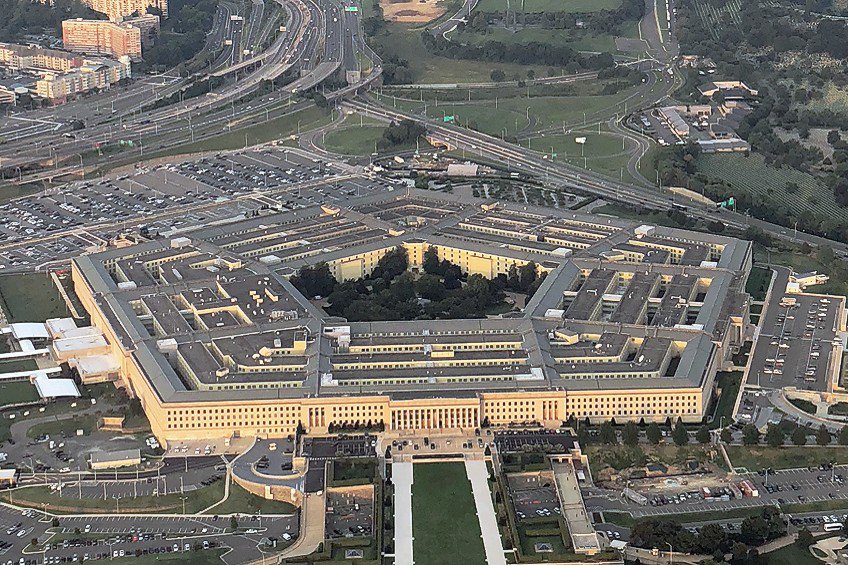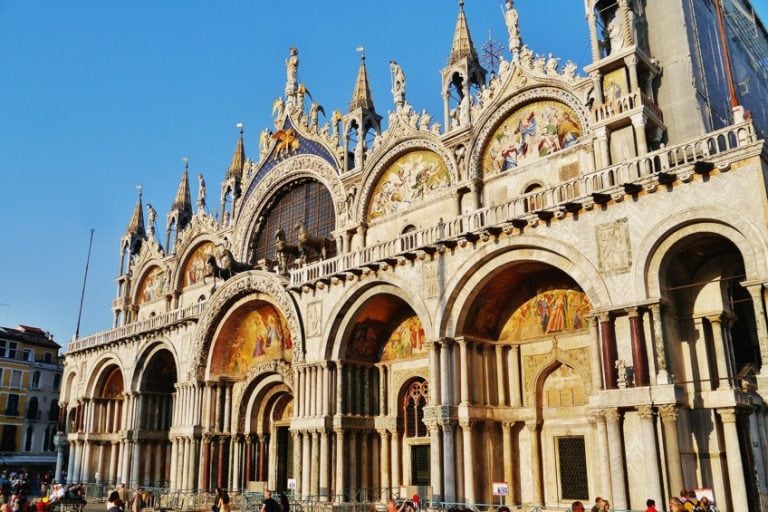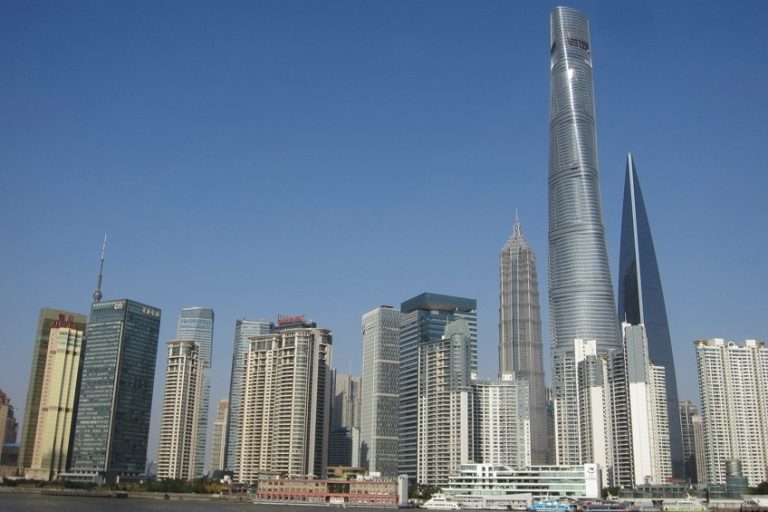Pentagon Building – The Pillars of Strength
Why is the Pentagon building shaped like a pentagon and what is the Pentagon used for? The Pentagon building houses the U.S. defense apartment and is shaped like a pentagon because the land it was built on is bordered by five roads. Let’s explore the Pentagon’s history and answer your related questions, such as “where is the Pentagon building physically located?”, “when was the Pentagon built?”, and “how many floors does the Pentagon have?”.
Table of Contents
- 1 The Pentagon’s History
- 2 Incidents at the Pentagon Building
- 3 Architecture and Design of the Pentagon Building
- 4 The Layout of the Pentagon
- 5 Visiting the Pentagon
- 6 Security Protocols
- 7 Function and Occupation Today
- 8 Why Is the Pentagon Shaped Like a Pentagon in Design?
- 9 The Significance of the Pentagon Building
- 10 Myths and Conspiracies
- 11 Frequently Asked Questions
The Pentagon’s History
| Architect | George Bergstrom (1876 – 1955) |
| Date Constructed | 1941 – 1943 |
| Height (meters) | 23 |
| Function | United States Department of Defense |
| Location | Arlington County, Virginia, United States |

The Pentagon building was built in a very short period of time during World War II. It was built by John McShain based on the design of George Bergstrom, an American architect. Consisting of 150 acres, it is ranked as the largest office building on the planet. Let’s begin our exploration of the Pentagon’s history by looking at its construction and design.
Construction of the Pentagon Building
The Pentagon’s structural and architectural design work progressed concurrently with construction, with the first designs delivered in early October 1941 and nearly all of the design work finished by the 1st of June, 1942. The construction sometimes ran ahead of the design, with materials other than those indicated in the blueprints being employed.
After the assault on Pearl Harbor on the 7th of December, 1941, pressure to accelerate the planning and building process intensified, with Somervell asking that 9.3 ha of the Pentagon building be ready for occupation by the 1st of April 1943.
After Bergstrom departed on the 11th of April, David J. Witmer took over as principal architect. Bergstrom was accused of inappropriate conduct while serving for the American Institute of Architects as its president. The condition of the soil on the site – on the Potomac River floodplain – caused issues, as did the site’s levels of elevation, which ranged from 3 to 12 meters above sea level.
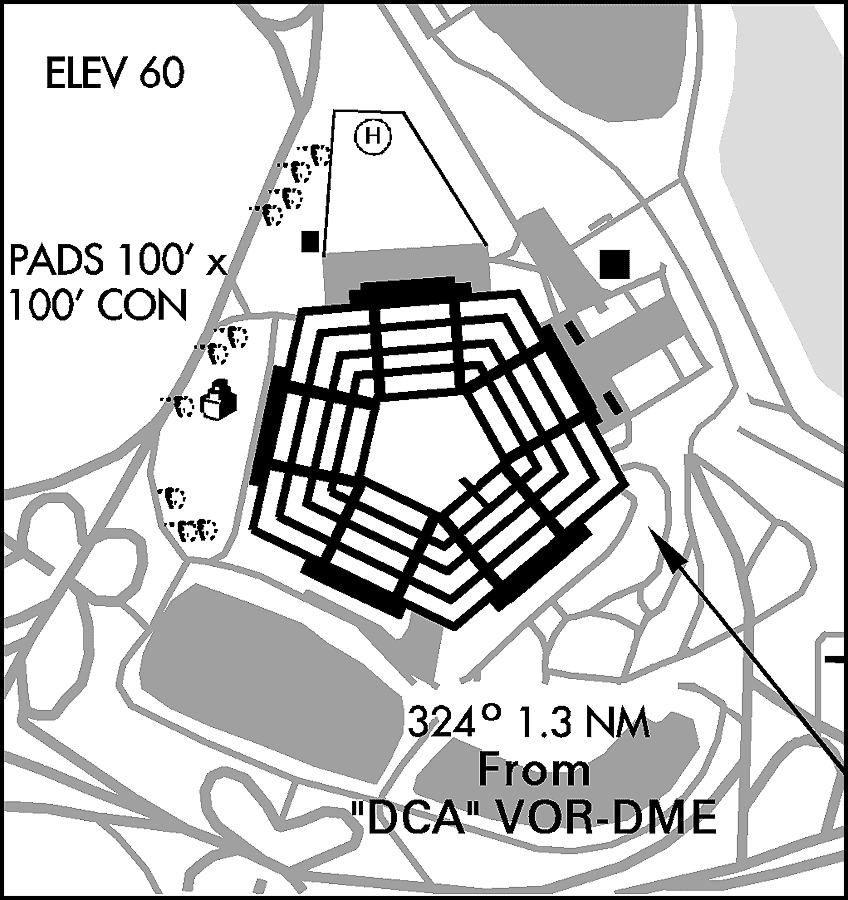
In order to account for the elevation fluctuations, two retaining walls were constructed, and cast-in-place piles were employed for dealing with the soil conditions. The Pentagon was built in conformity with the racial segregation regulations in effect in Virginia at the time, with distinct eating and restroom facilities for white and black people. While the restrooms were side by side, the blacks’ dining rooms were located in the basement.
Renovations
From 1998 until 2011, the Pentagon building was entirely gutted and rebuilt in stages to modernize it and increase efficiency and security. The building restoration was desperately required. When the renovations started, the Pentagon did not fulfill fire, safety, or health requirements, had no sprinklers, and endured 20 to 30 power outages per day due to obsolete electrical equipment.
All office windows were sealed and asbestos was removed. The majority of Pentagon office space was initially designed as open bays that comprised a full ring. For cooling, these workplaces relied on cross-ventilation by means of moveable windows rather than air conditioning.
Bays were gradually partitioned into separate offices, with many utilizing window air conditioning systems.
The renovated area features a return to open office bays as well as a new Universal area Plan with uniform office furniture and partitions created by Studios Architecture. Initially, the building featured just 13 elevators, all of which were dedicated to freight. Humans utilized concrete ramps to ascend and descend in order to preserve valuable wartime steel. There are presently 70 new elevators throughout the Pentagon.

Renovations were already begun and continued after the 9/11 terrorist attack. The damage, which extended into three of the outer concentric rings, needed the reconstruction of around 400,000 square feet of area. Demolition started in October 2001, and reconstruction started about a month afterward. In August 2002, the first employees returned to the new headquarters.
Incidents at the Pentagon Building
The Pentagon building became a focal site for anti-Vietnam War demonstrations in the late 1960s. On the 15th of February, 1967, Women Strike for Peace arranged a gathering of 2,500 women to protest in front of Robert S. McNamara, the Secretary of Defense’s office at the Pentagon. In May 1967, 20 activists staged a four-day protest outside the Joint Chiefs of Staff’s headquarters before being detained. On the 21st of October 1967, around 35,000 anti-war protestors assembled at the Defense Department for a rally known as the March on the Pentagon.
Around 2,500 soldiers with weapons confronted the demonstrators. During the demonstration, George Harris took a famous photograph in which he inserted roses in the troops’ rifle barrels.
The September 11th Attack on the Pentagon Building
On the 11th of September, 2001, five hijackers affiliated with al-Qaeda seized control of an American Airlines Flight en route to Los Angeles International Airport and intentionally crashed the plane into the Pentagon’s western side at 9:37 a.m. as part of the terror attacks on the Twin Towers. The plane’s impact badly damaged the wing’s outer ring, causing it to partially collapse. The Pentagon was under construction at the time of the attacks, and numerous offices were empty, which luckily meant fewer casualties.
Furthermore, the part of the building that was damaged, on the Heliport façade, was the most equipped for such an attack.
The renovations there, which were the result of the Oklahoma City explosion, were almost complete. It was the only place in the Pentagon that had a sprinkler system, so it was rebuilt with a system of bars and steel columns to withstand bomb explosions. The steel reinforcement, which was joined together to make an uninterrupted framework through all of the Pentagon building’s five doors, saved that portion of the building from falling for 30 minutes, allowing hundreds of people to safely crawl out. The blast-resistant windows were five cm thick and 1,100 kg apiece, and they remained intact during the crash and resulting fire.
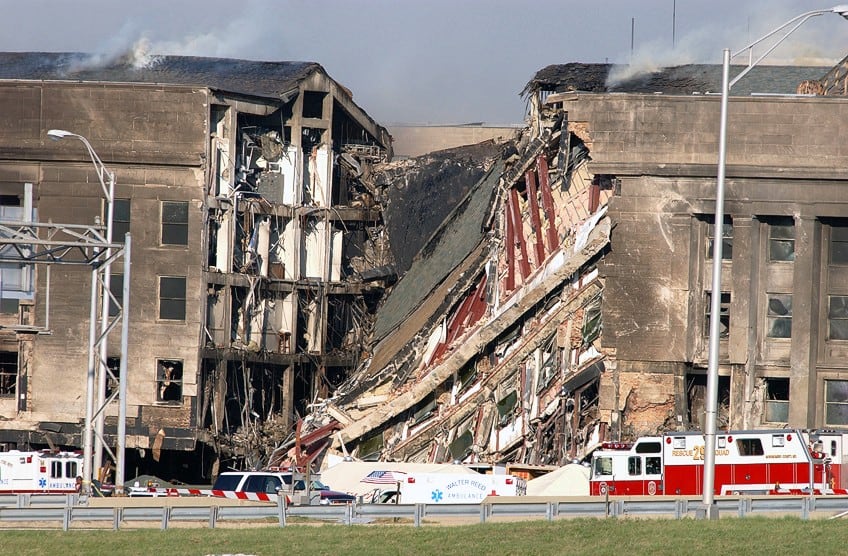
It also had automated fire doors and newly designed exits that enabled people to leave. Contractors already working on the refurbishment were tasked with reconstructing the areas destroyed in the attacks. The “Phoenix Project” was tasked with getting the destroyed section’s outer offices occupied by the 11th of September, 2002. A small indoor monument and chapel were constructed at the place of impact after the damaged part of the Pentagon was restored.
For the fifth anniversary of the 11th of September attacks, a tribute of 184 light beams shot up from the Pentagon’s main courtyard, a single beam for each victim of the terrorist attack.
Architecture and Design of the Pentagon Building
The River Terrace, Mall Terrace, South Parking, Concourse, and Heliport are the Pentagon’s five façade entrances. The Mall Entrance is located on the northern side of the Pentagon and leads out to a 180-meter terrace that is utilized for ceremonies. The River Entrance, which boasts a six-meter-long portico, is located on the northeastern side, facing Washington and overlooking the lagoon. The primary visitor’s entrance, as well as the Pentagon bus and metro station, are on the southeastern side. On the southeastern side of the building’s second level, which has a mini-shopping mall.
The southern parking lot connects to the southwestern façade, while the Pentagon’s western side overlooks Washington Boulevard.
Up until the late 1960s, troops were transported between the Pentagon and Bolling Air Force Base on a landing dock because the River Entrance has a steep slope that descends to the lagoon. A person can walk between any two sites in the Pentagon in under 10 minutes, although the best path can require a fast walk, passing through the open-air center courtyard, or both.

There are dining and workout facilities, as well as prayer and meditation rooms in the compound. Crystal City, Pentagon City, and Arlington’s substantial commercial, high-density residential districts, are located just south of the Pentagon.
The Hall of Heroes
It is a memorial to the individuals who were awarded the Medal of Honor, the highest military medal bestowed by the U.S. government. The Hall of Heroes has plaques with the names of all the recipients of the Medal of Honor, as well as displays of images and artifacts relating to their heroic actions.
The Hall is available to the public, and it is regularly visited by military members, veterans, and citizens who want to pay their respects to these heroic people.
Members of the U.S. Armed Forces who earned a name for themselves by acts of heroism that go beyond the call of duty are awarded the Medal of Honor. This medal has been given to less than 4,000 people since its founding in 1861, which makes it one of the most distinguished decorations a military service member is able to receive.
Materials
Members of the U.S. Somervell ordered the structural design to support flooring of up to 150 psi, which was carried out in case the Pentagon building was used as a records storage facility after the war ended. Steel was utilized sparingly since it was in low supply during the Second World War. Rather, it was constructed as a reinforced concrete building with 680,000 tons of dredged Potomac River sand, and a lagoon was created underneath the river entrance of the Pentagon. Instead of erecting elevators, concrete ramps were made to reduce steel consumption. The façade of the building is made of Indiana limestone.

The Layout of the Pentagon
The iconic Pentagon building is composed of five rings, five stories above ground, and two stories below ground. The corridors stretch for over 18 kilometers, yet despite their vastness, the corridors and interconnecting walkways permit an individual to access any office in a few minutes. The circles are designated “A” through “E” from the inside courtyard to the exterior courtyard.
Since the E-ring is the only one with outdoor views, it is where the most senior officials’ offices are located.
Ground Zero is the moniker given to the five-acre courtyard park. During the Cold War era, it was thought that the park would be a key target for Soviet nuclear missiles. The Pentagon building is double the size of Chicago’s Merchandise Mart, and the United States Capitol would fit in only one of its five wings.
Purpose of Each Ring in the Pentagon Building
The Pentagon’s outermost ring contains the offices of the Secretary of Defense as well as other top-level officials. The B Ring houses many of the administrative offices of the Department of Defense as well as the conference room for the Joint Chiefs of Staff. The C Ring houses various military branch offices and headquarters, as well as the Chairman of the Joint Chiefs of Staff’s offices.
The D Ring contains the majority of the civilian offices of the Department of Defense, as well as the Secretary of the Army’s offices. The Pentagon’s innermost ring is the E Ring, housing the Deputy Secretary of Defense’s offices, as well as the Pentagon Library and Conference Center.
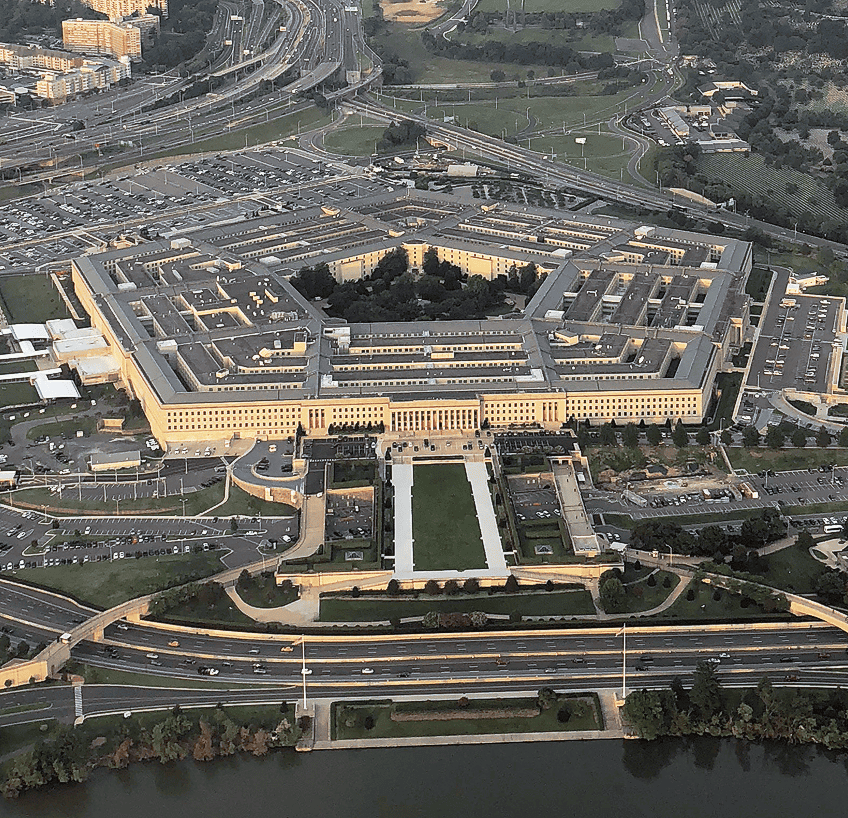
Visiting the Pentagon
Every year, around 100,000 individuals visit the Pentagon. A one-hour tour highlights the building’s history. The tour includes the Hall of Heroes, commemorating the Medal of Honor honorees, and an exhibit honoring prisoners of war and those lost in action. There are also several paintings of the nation’s founding fathers and a painting portraying the Declaration of Independence’s signing.
Guests will also be able to see the National 9-11 Pentagon Memorial while at the Pentagon.
The memorial, located on the western side of the structure, pays tribute to those who died on that terrible day. The 2-acre park includes lit benches etched with the victims’ names, memorial ponds, and a wall ranging in height from 71 inches to 3 inches to reflect the ages of the oldest and youngest victims. In addition, there are 85 maple trees and this is the only area on the premises where photography is allowed.

A grave marker can also be seen at the neighboring Arlington National Cemetery. It commemorates the 184 Pentagon attack victims. The five-sided granite memorial, situated in Section 64, displays the names of those who died on the aircraft and within the Pentagon. The Pentagon parking lots serve as a staging area for a variety of yearly events. Rolling Thunder, an event for motorcycle enthusiasts displaying support for America’s POWs and MIAs, is one of these events.
Security Protocols
The Pentagon is one of the world’s most guarded structures, with a variety of security systems and processes in place to safeguard the workers and assets within. A perimeter fence surrounds the Pentagon, which is continuously monitored by security cameras and guarded by armed guards. All guests must pass via a security checkpoint and produce identification to gain access to the premises. The structure also features reinforced concrete walls and blast-resistant windows.
The Pentagon has a sophisticated identification system that includes smart cards that record biometric data like iris scans and fingerprints.
The technology is used to regulate access to buildings and limit access to certain regions depending on safety clearance levels. The Pentagon employs many security staff members, including plainclothes operatives, uniformed officers, and Pentagon Force Protection Agency members. These individuals are in charge of monitoring security cameras, patrolling, and responding to incidents related to security.

The Pentagon has a thorough emergency response strategy in place, which includes processes for dealing with a wide range of threats, including natural disasters, terrorist attacks, and other catastrophes. Coordination with federal and local law enforcement authorities, as well as the military, is part of the emergency response strategy. The Pentagon has a strong cybersecurity policy in place to defend against cyber threats such as phishing attacks, malware, and other types of cyber-attacks.
Employee training, frequent security audits, and the deployment of modern security technologies are all part of the cybersecurity program.
Function and Occupation Today
Today, the Pentagon’s functions include military activity coordination and control, as well as overseeing defense departments and support groups. The Office of the Secretary of Defense is in charge of managing the operations of the Department of Defense and acts as the military’s principal civilian leadership. The Pentagon houses the offices of the Secretary of Defense as well as other high-ranking officials.
The Pentagon is used as the headquarters for the Navy, Army, Air Force, and Marine Corps. Each of the branches has its own office space as well as its own management structure.
The Pentagon houses several defense agencies, such as the Defense Logistics Agency and Defense Intelligence Agency. The Pentagon also houses a number of support agencies, including the Pentagon Force Protection Agency, which is in charge of the building’s and its people’s security, and Washington Headquarters Services, providing the Pentagon administrative support. A variety of civilian and military organizations are housed in the Pentagon.
Why Is the Pentagon Shaped Like a Pentagon in Design?
Under extreme pressure from Congress to locate a longer-term office space for the expanding department, the military assigned the chief of the design section, Lieutenant Hugh J. Casey, with designing a structure that could be built on a five-sided parcel of land bought hastily next to Arlington National Cemetery. The designers and architects devised a one-of-a-kind pentagonal building layout that made use of the peculiar proportions of the site.
Each of the five “wedges” would have many concentric rings of office space connected by corridors, and the complex’s center would be a courtyard.
After a protracted battle with conservationists who worried that the structure would obstruct the panoramic views of Washington from the cemetery, President Roosevelt determined that the new headquarters should be built on the current site, which is at the bottom of the 14th Street bridge over the Potomac River.
The new site did not have the same constraints as the old five-sided site, but the designers persisted with the initial pentagonal layout, citing the design’s numerous advantages. It would allow greater accessibility from one area of the Pentagon building to another than could be accomplished with a more traditional rectangular or square layout.

All of these requirements could be met most efficiently with the pentagonal shape. However, the five-sided concept was not without opponents, particularly members of the United States Commission of Fine Arts, a quasi-governmental group that was part of the design in the nation’s capital. A member of the Commission told Roosevelt that the structure was not only unattractive but would also make a great bombing target. Finally, the President stated that he favored the form for its originality and granted it his approval.
The Pentagon building has never been able to accommodate the entire United States Defense Department, despite the building’s original design and several military reductions throughout the years.
The Significance of the Pentagon Building
As the United States Defence Department’s headquarters, the Pentagon building is regarded as very significant. It is important for political, military, historical, and cultural reasons. Let us find out more about these reasons in more detail.
Political Significance
The Pentagon acts as the headquarters for the department in charge of the military forces of the country. As such, it has become a symbol of American military force and is often brought up in political debates regarding national defense and military policy. The Pentagon is crucial in ensuring the country’s national security.
It is the main location for planning and conducting military operations, as well as working with other government departments on national security issues. The Secretary of Defense wields considerable political power in the United States.
As a result, the Pentagon tends to be a significant factor in debates over foreign policy, defense budget, and other issues related to politics. The Pentagon’s political importance originates from its position as the center of American military strength and national security. Its choices and actions have the potential to significantly influence the political climate in the United States and throughout the world.
Historical Significance
The Pentagon is a historical landmark, both in terms of its construction and its role in international events. There are several significant historical events associated with the Pentagon building. During World War II, the Pentagon was erected in response to the necessity for a central place for military coordination and planning. Construction started in 1941, only a few months before the Japanese attack at Pearl Harbor, and took only 16 months to finish. The Pentagon functioned as a focal point for military strategy and collaboration against the Soviet Union during the Cold War.

It served as a symbol of American military supremacy at the time, playing an important part in the nuclear deterrent policies and arms race. Terrorists attacked the Pentagon as part of the coordinated strikes on the United States in 2001, as previously stated. The attack had a profound influence on American foreign policy and military actions, resulting in the Iraq and Afghanistan wars.
The Pentagon was a key player in the War on Terror in the period after the 9/11 attacks. It was an essential element in the creation and execution of military strategy and functioned as the command center for military operations in Iraq and Afghanistan. The Pentagon has long been a symbol of American national security and power.
Cultural Significance
The building’s unusual five-sided design and towering architecture have made it a globally recognized monument. It has appeared in films, TV programs, and other types of popular culture. The Pentagon is home to a wide range of monuments and memorials, notably the Pentagon Memorial, which is a tribute to the 9/11 victims. These memorials function as significant cultural landmarks and aid in the preservation of historical memory.
Its legacy and history have been ingrained in American society and are taught in museums, schools, and other educational institutions.
Myths and Conspiracies
As with every large organization, the Pentagon has a history of myths and conspiracies. One of the most widely held conspiracy theories about the Pentagon building is that it was not actually attacked by a hijacked jet on September 11th. Some supporters of this conspiracy contend that the damage was not in keeping with an airplane crash and that the government was actually behind the attacks. According to certain conspiracy theories, the Pentagon is participating in a cover-up of alien life and UFOs.
They claim that for years, the government has been concealing proof of extraterrestrial presence and technology.
The Pentagon is well-known for its involvement in clandestine military activities, which has given rise to a myriad of conspiracy theories concerning secret government projects and tests. Some conspiracy theorists even claim that the Pentagon has a role in mind control and other malicious operations. A Cold War myth claimed that the Soviets had nuclear missiles trained in the courtyard of the building.
Apparently, Soviet satellite footage showed huge groups of military personnel entering and departing the courtyard on a daily basis, prompting the Soviet military to believe that the courtyard contained a hidden entrance to an underground bunker. According to legend, the Russians targeted a large amount of their weapons on that spot. But that’s nonsense since the Pentagon was open to the public at the time, and anybody – including the Soviet spies – could have entered the courtyard to buy a hotdog at the well-known hotdog stand that was located there and presumably the source of all the traffic, not the entry to a bunker.
That wraps up our look at the Pentagon’s history and facts. The Pentagon was built between 1941 to 1943, with the intention of consolidating the War Department’s offices, which had previously occupied 17 distinct locations across Washington. Although Franklin D. Roosevelt, the president at the time, initially preferred a building without windows for shielding it from probable air assaults, construction engineers eventually convinced him that such a structure would be impracticable. Roosevelt ultimately approved George Edwin Bergstrom’s five-sided design, despite the fact that the Commission of Fine Arts chairman, who was tasked with providing guidance to the Congress on federally supported public structures, critiqued it as “among the most severe attacks on the plan of Washington”.
Frequently Asked Questions
What Is the Pentagon Used For?
The Pentagon acts as the Department of Defense’s administrative headquarters, overseeing financial management, human resources, and other administrative activities. It has a high degree of security and is in charge of protecting secret national security material. The Pentagon is responsible for military strategy and operations for the United States Armed Forces, which include the Navy, Army, Air Force, and Marine Corps. It functions as the primary command for organizing and carrying out military activities all across the world. The Pentagon also houses a variety of development and research organizations that are in charge of creating new military technology and weapons systems.
Where Is the Pentagon Building Physically Located?
Just on the other side of the Potomac River from Washington, D.C., lies Arlington, Virginia, which is where the Pentagon building is situated. The Pentagon is easily reachable by car and public transit, and there are a number of adjacent metro stations that make getting to the building simple. There are several well-known sites and attractions close by. Arlington National Cemetery, a national cemetery where numerous military veterans and other famous people are interred, is situated just across the Potomac from the Pentagon. The National 9/11 Pentagon Memorial, which is next to the Pentagon, pays tribute to the 184 individuals who died when the building was attacked in the September 11th attacks. The Lincoln Memorial, Washington Monument, and Smithsonian Institution are just a few of the well-known museums and monuments that can be seen on the National Mall, an extensive park area in the center of Washington, D.C.
When Was the Pentagon Built?
The Pentagon’s construction started on the 11th of September, 1941, and was finished on the 15th of January, 1943. The structure was completed in just over14 months, which was an outstanding performance given the scope of the undertaking at the time. During World War II, the United States government saw the Pentagon as a pressing requirement for a new, consolidated headquarters for the Department of Defense that could handle the rising military and civilian employees.
How Many Floors Does the Pentagon Have in Total?
The Pentagon has five stories in total. The structure also contains two basement floors with various storage facilities, repair shops, and mechanical rooms. The five upper levels are organized in a concentric pentagon pattern, with a wide courtyard in the center.
Justin van Huyssteen is a freelance writer, novelist, and academic originally from Cape Town, South Africa. At present, he has a bachelor’s degree in English and literary theory and an honor’s degree in literary theory. He is currently working towards his master’s degree in literary theory with a focus on animal studies, critical theory, and semiotics within literature. As a novelist and freelancer, he often writes under the pen name L.C. Lupus.
Justin’s preferred literary movements include modern and postmodern literature with literary fiction and genre fiction like sci-fi, post-apocalyptic, and horror being of particular interest. His academia extends to his interest in prose and narratology. He enjoys analyzing a variety of mediums through a literary lens, such as graphic novels, film, and video games.
Justin is working for artincontext.org as an author and content writer since 2022. He is responsible for all blog posts about architecture, literature and poetry.
Learn more about Justin van Huyssteen and the Art in Context Team.
Cite this Article
Justin, van Huyssteen, “Pentagon Building – The Pillars of Strength.” Art in Context. August 25, 2023. URL: https://artincontext.org/pentagon-building/
van Huyssteen, J. (2023, 25 August). Pentagon Building – The Pillars of Strength. Art in Context. https://artincontext.org/pentagon-building/
van Huyssteen, Justin. “Pentagon Building – The Pillars of Strength.” Art in Context, August 25, 2023. https://artincontext.org/pentagon-building/.


